- Military Library
- Comics
- PS Magazine Collection (1951 to 1971)
- The PS Magazine Background Story
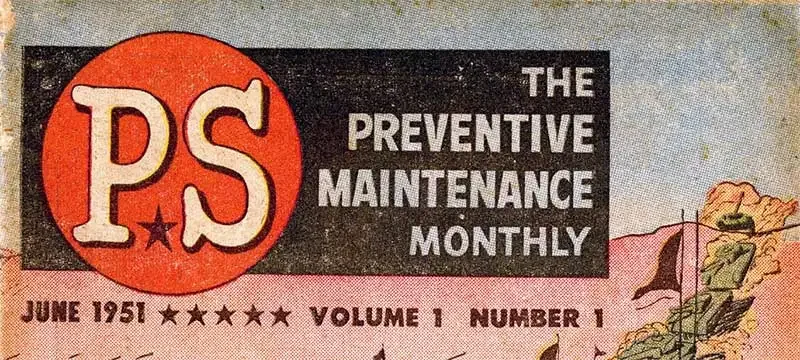
The PS Magazine Background Story United States Army comic style bulletins published between June 1951 and November 2019
The Preventive Maintenance Monthly, commonly known as PS Magazine, was a series of pocket-sized bulletins published by the United States Army from June 1951 to November 2019. This monthly magazine utilized comic book-style illustrations to depict appropriate preventive maintenance techniques, supply procedures, and associated safety measures.
The magazine's title originates from its function as a "postscript" to technical manuals and other published maintenance instructions. PS received formal classification as a technical bulletin (TB 43-PS-Series) in March 1987.
The magazine traces its origins to the analogous publication Army Motors during World War II, which PS Magazine supplanted in 1951. PS Magazine gained prominence for its utilization of recurring characters and anthropomorphic military apparatus. The magazine ceased paper production in 2017 but persisted in an online format. PS Magazine announced in January 2024 that it will end its operations on September 30, 2024, marking 73 years of publication.
Index of Content PS Magazine Background Story
The Origin: Army Motors Magazine
Corporal Will Eisner, a distinguished comic-book writer-artist-editor, commissioned Eisner to illustrate characters for Army Motors during World War II, including a Beetle Bailey-esque Private Joe Dope, a Lauren Bacall doppelgänger, "by the book" Corporal Connie Rodd, and Master Sergeant Half-Mast McCanick. Eisner left the Army as a chief warrant officer to found American Visuals Corporation, a contract graphic arts company. In response to an urgent need for maintenance guidance at the beginning of the Korean War, the Army contracted American Visuals Corporation to create instructional materials, similar to Eisner's work for Army Motors, for the Army Ordnance Corps's new publication, PS: The Preventive Maintenance Monthly, which replaced Army Motors in 1951.
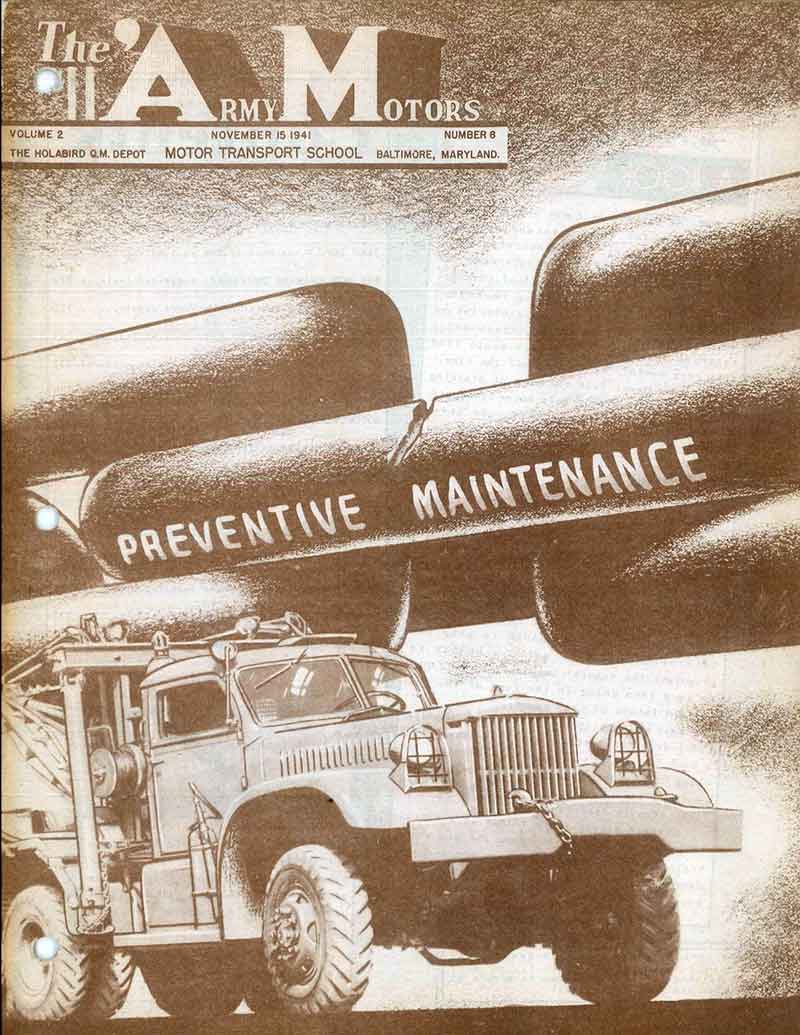
Publication and Production of PS Magazine
Eisner served as the artistic director of the publication from its inception until the conclusion of 1971. The magazine has featured artists such as Eisner, Murphy Anderson, Joe Kubert, Dan Spiegle, Scott Madsen, Malane Newman, Alfredo Alcala, and Mike Ploog. Since its inception, Department of the Army civilians have authored, researched, and edited the magazine.
The digest format magazine featured two-color spot illustrations and a four-color cover with continuity. The narrative, akin to a comic book, conveyed a brief tale through a sequence of panels, frequently featuring themes derived from popular fiction. From April 1951 to January 1955, PS's headquarters were located at Aberdeen Proving Ground, Maryland, before moving to Raritan Arsenal, New Jersey. In October 1962, it underwent another relocation to Fort Knox, Kentucky. They kept it there until July 1973, when they relocated it to the Lexington-Blue Grass Army Depot in Kentucky. In June 1993, it relocated to Redstone Arsenal, Alabama. Paper production ceased with the June 2017 issue; it is now exclusively available in online format.
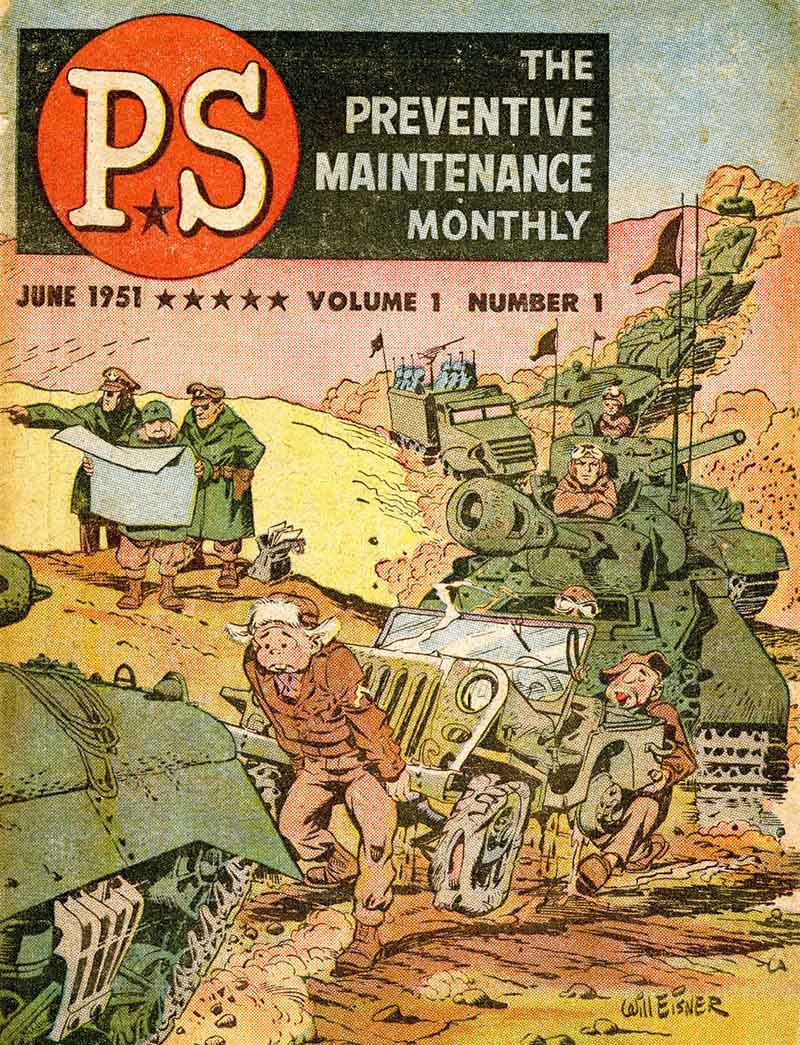
The Department of the Army published pamphlets 750-30 (concerning the M16 rifle) and 750-31 (pertaining to the Gama Goat), along with various posters such as 750-78 (addressing the function of enlisted leadership in preventative maintenance), all created in the PS style, occasionally featuring identical characters. The PS staff assisted in the development of foreign-language special editions and editions concentrating on subjects such as preventive maintenance in arid conditions. In 2023, a group of Ukrainian civilian volunteers commenced the translation of specific PS Magazine articles to aid the Ukrainian armed forces in sustaining the fleets of U.S.-supplied vehicles and equipment provided by NATO and other allied nations.
Characters in the PS Magazine
Eisner transferred Master Sergeant Half-Mast, Connie Rodd (now a civilian), and Privates Dope and Fosgnoff from Army Motors. Dope and Fosgnoff functioned as cautionary exemplars, whereas Half-Mast offered explicit technical instruction. In 1955, the Army permanently eliminated both Dope and Fosgnoff due to their mistakes. As additional combat support and combat service support units became part of the magazine, new characters were introduced to symbolize branch-specific concerns: Master Sgt. Bull Dozer for the Engineers in 1954, Percy the Skunk for the Chemical Corps in 1960, Sgt. First Class Windy Windsock (later Benjamin "Rotor" Blade) for Aviation in 1962, and Sgt. First Class Macon Sparks for the Signal Corps in 1977.
To better address the diversifying demographic within the military audience, we incorporated an African-American civilian woman named Bonnie in 1970. Sgt. First Class Pablo Hablo, a Hispanic quartermaster sergeant, was introduced in 1993 but was eliminated five years later due to perceptions of him as a racial stereotype. The PS line-up incorporated Online Warrior in 2001 to disseminate information about online resources. In 2010, Cloe succeeded Online Warrior, addressing broader issues related to communications and electronics.
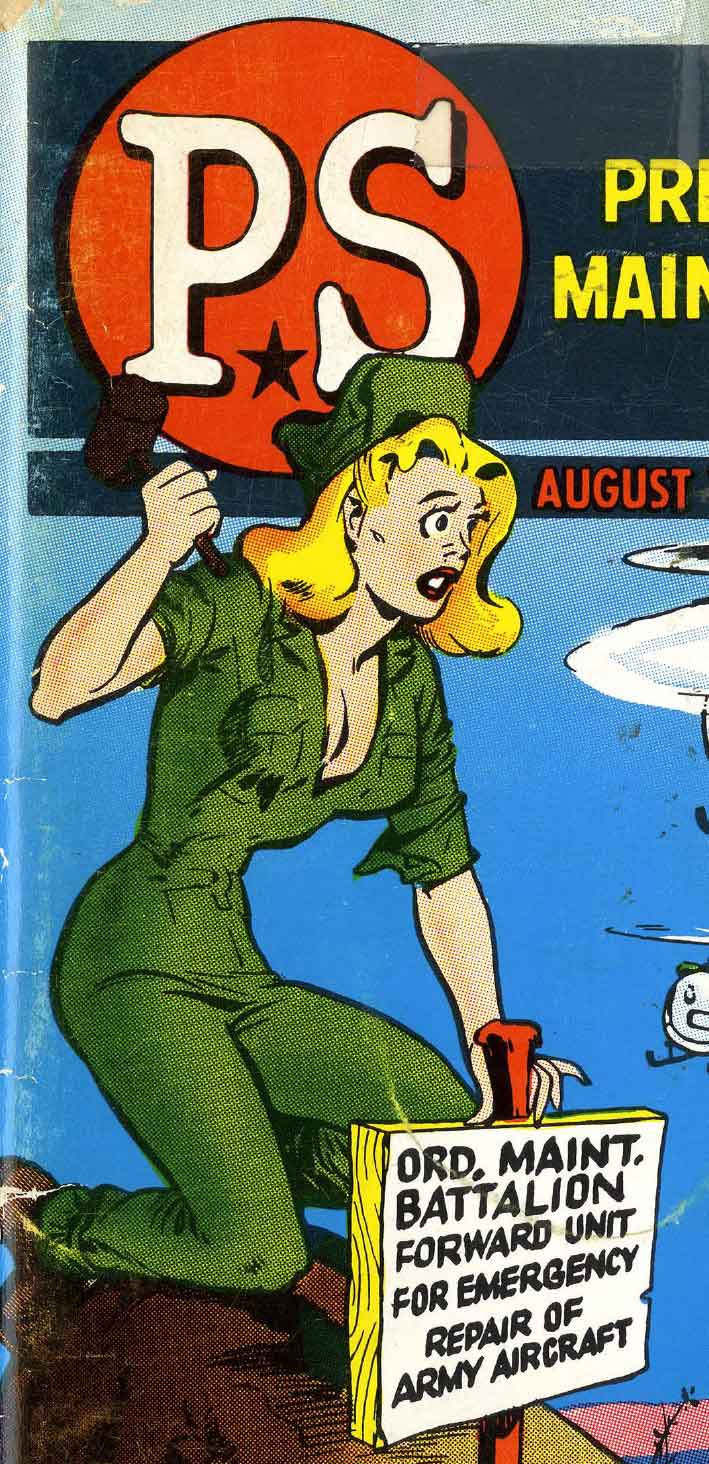
The magazine portrayed Connie and Bonnie as superficial pin-up models, or "cheesecake," between the 1950s and 1970s to attract predominantly male GIs to read PS. In March 1980, in response to a heightened representation of women in the Army and at the behest of Congresswoman Bella Abzug, along with Senators William Proxmire and Orrin Hatch, the magazine revised Connie and Bonnie to adopt a more modest and professional appearance.
Sherry Steward asserts that the anthropomorphism of military apparatus in the magazine helps the military audience establish profound connections with technology. The personified equipment frequently embodies emotions such as anger, sadness, fear, and happiness, which resonates with the reader's sense of duty. The anthropomorphized equipment responds to soldiers' actions through facial expressions, body language, and dialogue, fostering empathy among those responsible for maintaining the Army's machinery.
Will Eisner (William Erwin Eisner)
William Erwin Eisner (March 6, 1917–January 3, 2005) was an American cartoonist, author, and entrepreneur. Among the pioneers in the American comic book industry, his series The Spirit (1940–1952) garnered recognition for its innovative approaches to content and form. In 1978, he coined the term "graphic novel" with the release of his book A Contract with God. He was an early contributor to formal comic studies with his publication Comics and Sequential Art (1985). Each year, the Eisner Award honors his accomplishments in the comics medium, and he was among the first three inductees into the Will Eisner Comic Book Hall of Fame.
The U.S. Army conscripted Eisner in "late '41, early '42" and gave him approximately six months to settle his affairs before his deployment in World War II. The camp newspaper at Aberdeen Proving Ground assigned him to participate in a significant training program, which involved using comics as a training tool. Ultimately, he attained the rank of warrant officer, which required passing an examination, thereby circumventing the necessity of attending Officer Candidate School.
He stopped at the Holabird Ordnance Depot in Baltimore en route to Washington, D.C., to assemble a mimeographed publication named Army Motors. "In collaboration with the individuals present, I contributed to the development of its format." I commenced creating cartoons, and we initiated the development of a magazine capable of communicating with the G.I.s in their vernacular. I commenced utilizing comics as an educational instrument, and upon my arrival in Washington, I was tasked with the responsibility of instructing—or marketing—preventive maintenance.
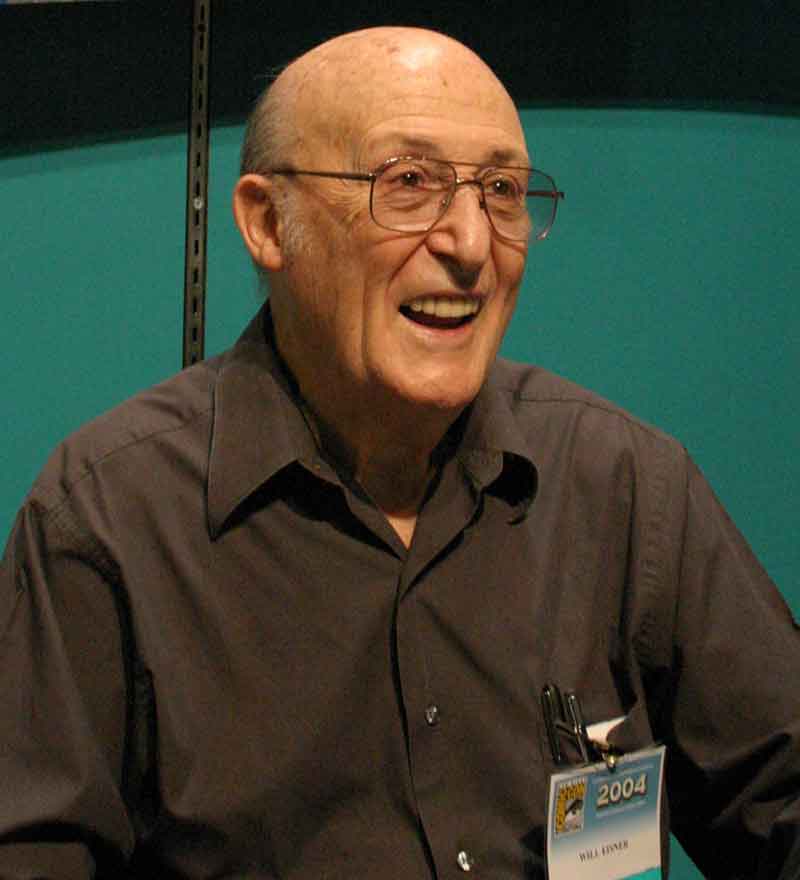
Eisner subsequently developed the educational comic strip and titular character Joe Dope for Army Motors, dedicating four years at The Pentagon to edit the ordnance magazine Firepower and produce "all the general illustrations—that is, cartoons" for Army Motors. He persisted in his efforts on that and its 1950 successor publication, PS—The Preventive Maintenance Monthly—until 1971. In 1968 and 1969, Eisner illustrated The M16A1 Rifle, an official Army pamphlet that aimed to assist troops in Vietnam by addressing the early reliability issues of the M16 rifle through proper maintenance. Eisner's approach facilitated the popularization of these officially distributed materials to enhance soldiers' understanding of equipment maintenance.
Eisner's subsequent graphic novels were solely his creations, whereas he employed a studio under his direction for The Spirit. Abe Kanegson, the letterer, developed a unique lettering style that Eisner subsequently emulated in his longer works, while Kanegson frequently revised Eisner's dialogue.
Jules Feiffer, later a distinguished cartoonist, playwright, and screenwriter, was Eisner's most trusted assistant on The Spirit. Eisner later remarked, recalling their collaborative techniques for the feature, "You should hear me and Jules Feiffer debating in a room." No, you created the splash page for this project, subsequently authored the conclusion—I conceived the story's premise, and you developed it until this juncture, after which I produced the subsequent page and this sequence here and… I will assert emphatically that 'he' authored the conclusion of that particular piece. We consistently disagree.
Eisner trusted his assistants so much that he allowed them to "ghost" The Spirit from his enlistment in the U.S. Army in 1942 until his return to civilian life in 1945. The principal wartime artists were the unacknowledged Lou Fine and Jack Cole, while Jack Keller, who would later illustrate Kid Colt, Outlaw, contributed backgrounds. Ghostwriters comprised Manly Wade Wellman and William Woolfolk. The wartime ghost stories have been republished in DC Comics' hardcover collections, The Spirit Archives, Volumes 5 to 11 (2001–2003), covering the period from July 1942 to December 1945.
Will Eisner: post-war comics
Upon Eisner's return from military service and reinstatement in the studio, he produced the majority of the Spirit narratives that established his reputation. During the post-war years, he endeavored to initiate the comic strip/comic book series Baseball, John Law, Kewpies, and Nubbin the Shoeshine Boy; none were successful, although some content was repurposed for The Spirit. The Spirit discontinued publication in 1952. In the 1960s and 1970s, numerous publishers reissued the adventures, frequently featuring covers by Eisner and including a limited number of new stories from him.
On January 3, 2005, in Lauderdale Lakes, Florida, Eisner succumbed to complications following a quadruple bypass surgery on December 22, 2004. DC Comics held a memorial service at the Angel Orensanz Foundation on Norfolk Street in Manhattan's Lower East Side, a neighborhood Eisner often visited in his professional pursuits. His wife, Ann Weingarten Eisner, and their son, John, survive Eisner. In the introduction to the 2001 reissue of A Contract with God, Eisner revealed that his leukemia-stricken teenage daughter, Alice, who died in 1970, served as the inspiration for the title story. Prior to that time, only Eisner's intimate associates were cognizant of his daughter's existence and demise.
- {{#owner}}
- {{#url}} {{#avatarSrc}}
{{name}} {{/url}} {{^url}} {{#avatar}} {{& avatar}} {{/avatar}} {{name}} {{/url}} - {{/owner}} {{#created}}
- {{created}} {{/created}}























